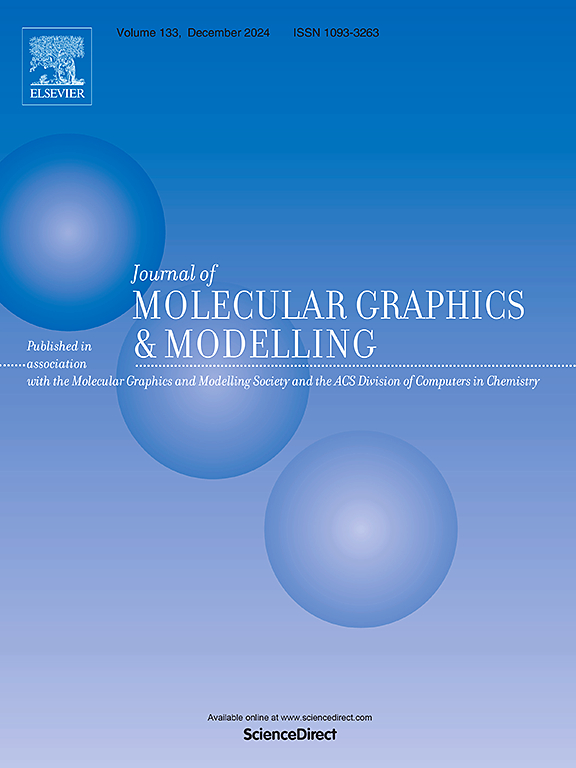非编码环状RNA hsa_circ_0004872编码的异常蛋白MAPK1-109aa的结构-功能活性研究
IF 3
4区 生物学
Q2 BIOCHEMICAL RESEARCH METHODS
引用次数: 0
摘要
环状RNA是闭环单链非编码RNA分子。曾经被认为是转录垃圾,它们在肿瘤发生过程中的生理作用最近被确定。尽管它们属于非编码rna,但其中一些具有独特的蛋白质编码能力。编码MAPK1-109aa蛋白的环状RNA hsa_circ_0004872就是这样一个例子。该蛋白与胃癌通路相关,因为MAPK1 - 109aa可以结合MEK1并抑制MAPK1的磷酸化,从而进一步扰乱胃癌发生所必需的下游信号传导和激活过程。然而,MAPK1-109aa及其伙伴结合相互作用的残基水平细节尚不清楚。因此,我们的目标是描绘蛋白质的结构细节和折叠模式,并提供其与结合伙伴MEK1相互作用模式的见解。此外,我们试图确定MAPK1-109aa是否在胃癌以外的任何途径中发挥作用。通过网络分析技术,我们可以预测这种蛋白质与导致神经变性和其他疾病的途径有关。本研究首次阐明了MAPK1-109aa与MEK1相互作用在胃癌发病中的残差水平模式,以及MAPK1-109aa与其他疾病的关联。本研究突出了MAPK1-109aa作为胃癌治疗剂的潜在应用前景。本文章由计算机程序翻译,如有差异,请以英文原文为准。

Structure-function activity study of the unusual protein MAPK1-109aa encoded by the non-coding circular RNA hsa_circ_0004872
Circular RNAs are closed-loop single-stranded non-coding RNA molecules. Once considered as transcriptional junks, their physiological roles in the process of tumourigenesis have recently been being identified. In spite of belonging to the class of non-coding RNAs, some of them have distinct protein coding abilities. The circular RNA hsa_circ_0004872, which encodes the protein MAPK1–109aa, is one such example. This protein is associated with gastric cancer pathway, as, MAPK1–109aa can bind to MEK1 and inhibit the phosphorylation of MAPK1 and this further disturbs the downstream signalling and activation processes necessary for the onset of gastric cancer. However, the residue level details of the binding interactions of MAPK1-109aa and its partners are not yet available. Therefore, our aim is to delineate the structural details and folding pattern of the protein and provide insight on its mode of interactions with its binding partner, MEK1. Furthermore, we tried to determine whether MAPK1-109aa has its role in any pathway(s) other than gastric cancer. Through the technique of network analyses, we could predict that the protein is associated with the pathways that lead to conditions like neurodegenerations and others. This work is the first of its kind, which elucidates the residue-level pattern of interactions of MAPK1-109aa with MEK1 in gastric cancer onset as well as the association of MAPK1-109aa with other diseases. This work highlights the potential application of MAPK1-109aa as a therapeutic agent for the treatment of gastric cancer.
求助全文
通过发布文献求助,成功后即可免费获取论文全文。
去求助
来源期刊

Journal of molecular graphics & modelling
生物-计算机:跨学科应用
CiteScore
5.50
自引率
6.90%
发文量
216
审稿时长
35 days
期刊介绍:
The Journal of Molecular Graphics and Modelling is devoted to the publication of papers on the uses of computers in theoretical investigations of molecular structure, function, interaction, and design. The scope of the journal includes all aspects of molecular modeling and computational chemistry, including, for instance, the study of molecular shape and properties, molecular simulations, protein and polymer engineering, drug design, materials design, structure-activity and structure-property relationships, database mining, and compound library design.
As a primary research journal, JMGM seeks to bring new knowledge to the attention of our readers. As such, submissions to the journal need to not only report results, but must draw conclusions and explore implications of the work presented. Authors are strongly encouraged to bear this in mind when preparing manuscripts. Routine applications of standard modelling approaches, providing only very limited new scientific insight, will not meet our criteria for publication. Reproducibility of reported calculations is an important issue. Wherever possible, we urge authors to enhance their papers with Supplementary Data, for example, in QSAR studies machine-readable versions of molecular datasets or in the development of new force-field parameters versions of the topology and force field parameter files. Routine applications of existing methods that do not lead to genuinely new insight will not be considered.
 求助内容:
求助内容: 应助结果提醒方式:
应助结果提醒方式:


